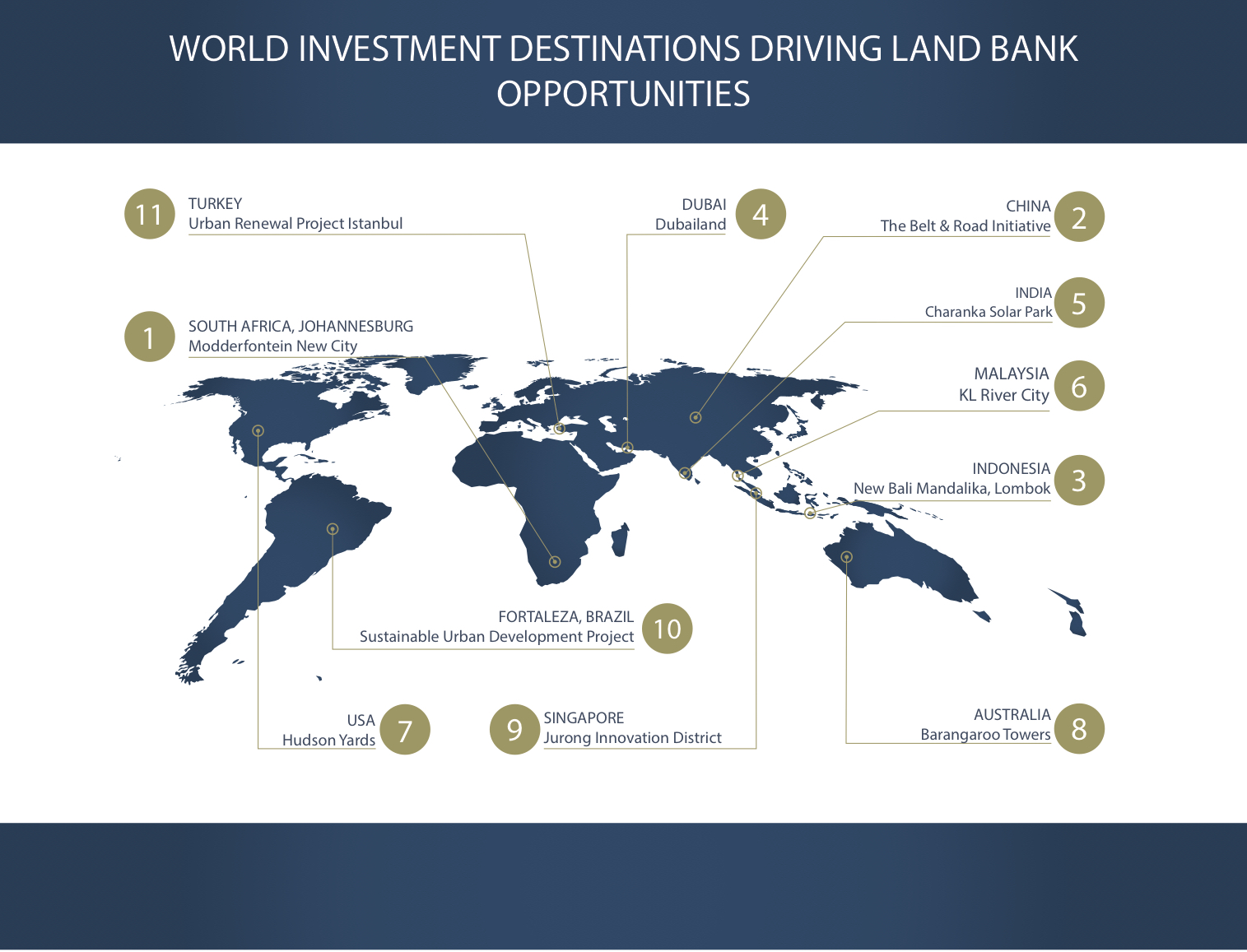When it comes to finding the perfect port in a storm, what could be better than a plot of dry land?
Even in these unprecedented times when Covid-19 has markets rising and falling like a tempestuous ocean, land banking can potentially be a safe sanctuary for your money.
Often overlooked, the practice of land banking allows developers and investors to secure sites for future projects early in potential growth areas.
The purchase of undeveloped land is relatively low-risk so long as you complete the necessary due diligence.
What is Land Banking?
The investment in vacant land that has the potential to increase in value.
What are the potential drivers for valuation increase?
- Normal market annual growth
- Future increased yields in the site's development zoning, use and/or density eg. Higher value useage
- Increased demand due to increased population or tourism growth
- Infrastructure improvements such as services, roads, highways and airports

Source: Invest Islands
Why land bank?
- An empty plot of land bought a decade ago will have changed neither in size nor shape, yet land is the portion of a property investment that has the potential to appreciate in value.
- Historically, the land component is often seen as a hedge against inflation.
- Often the land component of a property increases at a greater rate than the improvements that sit on top of the land.
- Improvements such as buildings can often decrease in value over time and can eventually become commercially unviable
- Often the properties with higher land value as percentage of its total worth has the potential to increase at a higher annual rate.
- Since the novel coronavirus was declared a pandemic, there has been a trend in real estate enquiries looking for safer and lower risk investments to invest capital.
How do investors know if a site is suitable for land banking?
According to Invest Islands, the strategy for individual private investors is to find a location in the early stages of development - a place where you can still purchase land at relatively low prices before the wider world perceives its potential value.

Torok Beach in Lombok, Indonesia. Source: Invest Islands
- Dimensions - The size and shape of a plot could determine whether it lends itself to development.
- Topography - Is the land able to naturally accommodate services such as sewerage or will pumping be required?
- Obstacles - Is there any part of the natural landscape that would affect future development?
- Neighbourhood - What properties are most prominent in the surrounding area? Is there a type of development that is likely to be more suited to what is already there?
- Population Growth - Is the property located in a potential population growth corridor?
- Tourism Growth - Is the property located in a potential tourism growth corridor?
- Zoning - Has the property the potential for improved change of use eg from farming to housing?
- Infrastructure - Are there plans for future highways and airports as examples?
- Near Beaches or Natural Water Ways - Located near beaches and natural environments of attraction eg views, beach access etc
What is the exit strategy?
Once you have determined the time is right to sell your land bank, the exit strategy can often be one of the below three options:
- Sell all or some of the land to a developer
- Develop the land yourself to realise both the land value and developers profit
- Co-Develop with a developer partner to realise the land value and share developer's profit.
How to land bank?
- Undertake your own due diligence, seek independant professional advise, negotiate and purchase your land banking investment.
- Often investing solely can be limited by your budget. By investing with a group like Invest Islands allows you to take advantage of its experience and participate in land banking from as little as $35,000 USD.
Click here for more information about Invest Islands.
THIS IS A SPONSORED FEATURE ARTICLE











